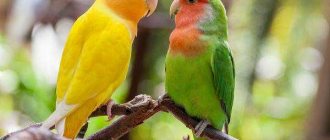Eagles are fairly large birds of prey that belong to the hawk family. They live in Africa, as well as in Eurasia and North America. These animals have a fairly large wingspan - can reach 2.5 meters. Very beautiful and amazing creatures.
Most often, eagles prefer to hunt small vertebrates. First, they look for them while still hovering in the sky. It is worth noting that some species may well feed on simple carrion.
Currently, the number of these birds is declining. This happens because people are destroying our nature while developing agricultural activities. All this has a major impact on the reduction of food for eagles.
In this article we will look at what the largest eagles in the world are.
Eagle dwarf
The dwarf eagle is one of the small representatives of this amazing family. Many people note that he is very attractive, as his physique is similar to a buzzard.
Unlike the falcon, the dwarf eagle prefers to hunt not only in the sky, but also on the ground. This species was first studied in 1788. This name fully justifies the size of this bird. Currently, only 2 of its subspecies are known. Some have dark plumage, while others have light plumage.
It is worth noting that the Indo-Europeans attached quite a lot of importance to this species. In fact, the name “dwarf” does not at all correspond to the appearance of a stern and rather dangerous bird. Its small size is compensated by powerful paws and tenacious claws.
The dwarf eagle can safely live in Europe, as well as in South Africa and Central Asia. It prefers to eat hares and rabbits, rats, as well as starlings, magpies, wood larks, partridges and many others.
Hunting
The hunting pattern of the golden eagle depends on weather conditions. So, in clear weather, the golden eagle will soar in the heights, looking for prey with its keen gaze, and when one appears in its field of vision, the golden eagle quickly dives, grabs the victim with its tenacious claws, breaks the spine or hits with its sharp beak, tearing blood vessels, and carries the already dead one into your nest. In cloudy weather, the golden eagle will wait for its prey in ambush sitting on the treetops. And again, when suitable prey appears nearby, he acts according to the same algorithm - a rapid throw, grabbing, and so on...
Hawk eagle
The hawk eagle is a fairly large bird that belongs to the hawk family. The length of one of its wings is almost 55 cm. The color can be completely different - mostly blackish-brown.
This species of eagles lives in the tropical and subtropical zones. It feeds on small mammals, rabbits, hares, partridges and pigeons. It can catch prey on the ground and in the air.
Currently considered endangered. The cause of extermination is people. It is worth noting that very often these birds die on power lines.
Video
And in conclusion, we invite you to listen to what a golden eagle sounds like.
Author: Pavel Chaika, editor-in-chief of Poznavaika magazine
When writing the article, I tried to make it as interesting, useful and high-quality as possible. I would be grateful for any feedback and constructive criticism in the form of comments on the article. You can also write your wish/question/suggestion to my email [email protected] or Facebook, with respect, the author.
Author page
This article is available in English -
Golden Eagle.
Stone eagle
Currently, the number of stone eagles is estimated at between one hundred and one thousand individuals. This species was first discovered in 1822. Lives in Africa, Central and South Asia. For example, in India, the stone eagle prefers to live near small towns. Many residents note that it can be seen at an altitude of up to three thousand meters.
These animals become very attached to their habitats and therefore rarely leave them. They mostly lead a diurnal lifestyle, and fly out to hunt quite early in the morning. In the evening they head out for the night.
The diet includes medium and large insects. The lifespan of such a bird is no more than 30 years.
The largest predator's nest
The bird builds a nest in the spreading crowns of huge pine trees, building its home at an altitude of 50-75 meters. Such a place allows you to create an excellent viewing platform and ensure the safety of future chicks. The material for its construction is thick branches.
Harpy Nest
The bird lines the inner surface of a wide nest, the diameter of which reaches about 1.5-2 meters, with moss and leaves. To protect their chicks from the scorching sun, a canopy of branches is built over the nest. Harpies are constancy and remain with their partner throughout their lives. The lifespan of the giant bird is about 60 years. The nest built by the couple is used for several years, expanding and being completed every year.
Harpy Chick
Birds nest every other year, laying only one egg with a yellowish shell each time. Harpies are caring parents, raising children up to the age of one and a half years, until they are fully strengthened and learn to feed on their own. During this period, they fearlessly protect their home from strangers. Near the nest, the parents behave aggressively and can even attack humans.
Greater Spotted Eagle
The Greater Spotted Eagle has a body length of about 65-75 centimeters. Females are much larger than males. The plumage is mostly monochromatic, dark brown, but the back of the head can be a little lighter in color.
They prefer to live in Eurasia, Poland, Hungary and even China. Winter is celebrated in India or Iran. Can also be seen in Russia.
This type of eagles prefers to live more in mixed forests, as well as near meadows and swamps. A spotted eagle tries to catch its prey from a great height. Its food is rodents, as well as small reptiles and amphibians.
Currently, these animals are bred in captivity. They are listed in the Red Book of Russia, as their population is significantly declining.
Types, photos and names
There are 6 main subspecies of golden eagles, which differ in feather color and size; below are some of them.
Canadian golden eagle
Lives in North America, USA and Canada.
Central Asian golden eagle
This golden eagle, which lives in the mountains of central Asia, is distinguished by its distinct dark feather color and black “cap”. The feathers on the back of his head are brown, not golden.
Southern European golden eagle
This subspecies of golden eagle lives in the mountains of Southern Europe from Spain to the Caucasus. Found also in our Carpathians. Its color is slightly lighter than that of other golden eagles, and it has a clearly visible “cap” on its head.
Spanish burial ground
The Spanish burial ground received its name from Prince Adalbert of Bavaria. Until recently, this species was considered a subspecies of the Imperial Eagle, but now it is considered a separate species. The body length is only 80 cm, the wingspan can be up to 2.2 meters.
The plumage is dark brown. Can be found in Spain and Portugal. Basically, the Spanish Imperial Eagle prefers to eat rabbits, but also rodents, hares, pigeons, ducks and sometimes even foxes.
Feels calm in open landscapes. It is worth noting that this species of eagles prefers to lead a monogamous lifestyle. Currently, the bird population is known to be declining. They die mainly due to illegal poisonous baits that people place.
Main varieties of giants
Among modern large individuals, in addition to the harpy, there are other species of birds that are distinguished by their impressive size. Unfortunately, many of them are so few in number that they are taken under protection and included in the pages of the Red Book.
Golden eagles are proud giants, real beauties that make you admire their flight
Golden eagle
This is the largest representative of the family after the harpy. The average weight of an adult is 6.6 kg. The bird is so smart that it is almost impossible to notice it: the golden eagle is considered a feathered master of camouflage. It uses rodents, turtles, squirrels, foxes, and small birds as food. The number of golden eagles is declining significantly due to a decrease in the food supply and human activity.
Note! This bird has color vision. If there is a lack of food, older chicks can kill and eat the younger ones.
Many people are interested in who is bigger – the golden eagle or the eagle. The question itself does not allow us to give the correct answer, because the golden eagle is one of the species of eagles.
Burying ground
The huge imperial eagle, due to its eerie name, can inspire fear. However, they are often also called imperial. The average weight of a bird is 3-5 kg, the wingspan is about 2 m. These birds are very powerful, strong, and muscular. They are also rare and are under state protection.
They form strong couples for life, which can only be broken by the death of one of the partners. Nests are built at a considerable height, approximately 15-20 m above the ground, using branches, dry grass, moss, and manure. There are from 1 to 3 eggs in a clutch; the female does the incubation, while the male gets food.
Imperial Eagles are considered the most clumsy and slow of the entire family, which is why they do not strive to catch agile, nimble animals, preferring simpler prey: marmots, jerboas, gophers. It is quite difficult to catch a bird in flight, but large, slow birds become the main food. These are partridges, wood grouse, quails.
Note! ¾ of its own weight - this is how much weight an eagle can lift. The most powerful and powerful birds can handle a weight of 3-8 kg.
Despite the eerie name, the Imperial Eagle is a very attractive powerful bird
Eagles
The eagle is one of the most powerful individuals, a powerful bird with snow-white plumage on its head, living in North America. Uses small rodents for food, wingspan - up to 2 m, average weight - up to 6 kg. Chicks become capable of independent flight at 12 weeks.
A special feature of the eagle is the presence of binocular vision, thanks to which the bird skillfully tracks down prey.
martial eagle
This predator is the closest relative of the hawk. Quite large, living in the Sahara Desert. The dark brown plumage on the back and neck gradually turns into snow-white on the belly, with brown blotches as decoration. Powerful pectoral muscles and proud posture give the bird a royal appearance.
4.5-5 kg – that’s how much an eagle weighs. Of course, you can’t call him a record holder, but his performance is truly impressive. It has yellow eyes and a wingspan of more than 2.2 m.
Burying ground
The Imperial Eagle is a fairly large bird that belongs to the hawk family. Prefers to live in the forest-steppe zone of Eurasia, as well as in the central regions of China.
Hunts gophers, marmots, small hares and birds. It is considered a separate independent species. It differs from the golden eagle, for example, in its smaller size.
Ornithologists believe that this species was named so because they bury their dead relatives. Currently included in the Red Book of Russia, as their populations are declining.
Natural enemies
In nature, eagles have practically no enemies. Birds living in tropical forests can die as a result of attacks by poisonous snakes. Most often, young birds or females hatching eggs are affected. In mid-latitudes, predators periodically receive fatal injuries when attacking wolves.
The decline in the eagle population in recent decades is not due to natural reasons, but as a result of human economic activity. Deforestation, plowing of virgin lands, and the use of chemicals to bait rodents in fields lead to a decrease in the habitat of eagles and a reduction in the food supply.
PENGUIN
steppe eagle
Currently, the steppe eagle is considered a rather rare endangered species. But just three decades ago they were numerous and widespread.
When an eagle reaches the age of four years, it changes its color to dark brown. It is found in Russia, in the Astrakhan and Rostov regions.
In order for it to exist normally, it needs open spaces that are untouched by people. In most cases, it leads a diurnal lifestyle. It can easily feed on small and medium-sized rodents and gophers.
Kaffir eagle
The Kaffir eagle is considered a fairly large bird. It differs from others in that it has 2 white stripes on the shoulders in the form of the Latin letter V. They were first studied by the French naturalist Rene in 1831.
Most live in Southern Sahara. They settle in drier mountainous areas. They lead a very simple lifestyle. Eagles become strongly attached to their home area and try not to leave it.
It is worth noting that the Kaffir eagle makes amazing sounds that are similar to the voices of young turkeys. It feeds on small antelopes, monkeys, hares, and also rabbits. In rare cases, it can also use carrion. Before attacking their prey, they sink low to the ground.
Wedge-tailed eagle
The wedge-tailed eagle is an exclusively diurnal bird of prey, found primarily in Australia and also in Tasmania. It prefers to build its nest on taller trees, from where it can see all the surroundings. Favorable conditions are where there is enough food for them.
They can also feed well on carrion, but their main prey is rabbits, lizards and small birds. There have been known cases of attacks on small lambs.
Nutrition
The golden eagle is a bird of prey and therefore its main diet is various small animals, usually various rodents: field mice, rats, gophers, ferrets, hares, martens, squirrels. Sometimes large golden eagles attack even such large animals as
foxes, fawns, calves and even sheep. They are not averse to feasting on other smaller birds, such as pigeons, ducks, herons, partridges, owls, and geese.
Interestingly, the daily food requirement of a golden eagle is 1.5 kg of meat. In this case, he can fast for up to 5 weeks.
Golden eagle
The golden eagle is considered one of the largest birds that belong to the hawk family. It has not only impressive dimensions, but also a specific taste.
Can adapt to completely different conditions. It is almost impossible to see him, since he has great intelligence and cunning and almost always avoids meeting a person.
Currently, their numbers are significantly reduced. Lives in Alaska, Russia, Belarus, Spain. It feeds on hares, foxes, marmots, turtles, squirrels and much more.
14 1
Captivity
Since ancient times, people have tamed this bird of prey as an assistant in hunting. And although keeping golden eagles in captivity is not a simple matter, nevertheless, an unforgettable hunt with their participation compensates for the trouble. Young birds are usually chosen for training, gradually taming them. So the hunter puts on a leather glove, puts the golden eagle on it and rides around the city with it, this is done so that the bird gets used to the voice and sight of people.
At the same time, the golden eagle is limited in food; it is fed every other day, while at the same time poisoning it against a stuffed animal.











